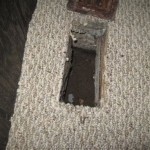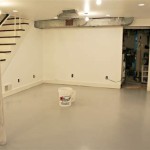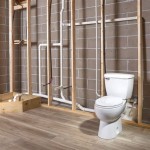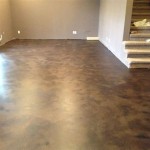Average Humidity in a Basement: Maintaining an Ideal Environment
Basements are often overlooked spaces in homes, yet they play a crucial role in maintaining a comfortable and healthy living environment. One important factor to consider is the humidity level in the basement. Understanding the average humidity range and its impact on the basement can help homeowners create a healthy and functional space.
What is Humidity?
Humidity refers to the amount of water vapor present in the air. It is measured as a percentage, with 0% representing completely dry air and 100% representing fully saturated air. The ideal humidity level for a basement varies depending on the specific use of the space.
Average Humidity Range for Basements
In general, the average humidity range for basements is between 40% and 50%. This range helps prevent moisture-related issues such as mold growth, condensation, and structural damage. However, it is important to note that basements used for storage may benefit from slightly lower humidity levels (around 30-40%) to minimize the risk of condensation and mold on stored items.
Consequences of High Humidity
Excessive humidity in a basement can lead to several problems:
- Mold growth: High humidity provides an ideal environment for mold to thrive. Mold can cause respiratory issues and damage building materials.
- Condensation: Excess moisture in the air can condense on surfaces, leading to dampness and potential water damage.
- Structural damage: Moisture can weaken building materials such as wood and drywall, causing structural problems.
- Musty odor: High humidity can create a musty odor in the basement, affecting the air quality.
Consequences of Low Humidity
While high humidity is a concern, excessively low humidity can also have adverse effects:
- Dry skin and respiratory issues: Low humidity can dry out skin and mucous membranes, leading to irritations and respiratory problems.
- Static electricity: Dry air can accumulate static electricity, causing discomfort and electrostatic shocks.
- Cracked wood: Extreme dryness can cause wood to crack and warp, affecting furniture and structural elements.
Measuring and Controlling Humidity
To maintain optimal humidity levels in the basement, it is essential to measure and control humidity. A hygrometer can be used to measure the humidity level. If necessary, a dehumidifier can be installed to remove excess moisture from the air, while a humidifier can add moisture if the air is too dry.
Preventing Humidity Issues
In addition to measuring and controlling humidity, there are preventive measures that can be taken to reduce humidity levels in the basement:
- Sealing leaks: Check for and seal any water leaks in pipes, walls, or floors.
- Improving ventilation: Install exhaust fans or open windows to allow moisture to escape.
- Using moisture-resistant materials: Opt for mold-resistant drywall, paint, and insulation.
- Avoiding moisture-generating activities: Limit activities that add moisture to the basement, such as laundry.
By understanding the average humidity range for basements, the consequences of high and low humidity, and the importance of measuring and controlling humidity, homeowners can create a comfortable, healthy, and functional basement space.

How To Achieve An Ideal Basement Humidity Of 30 50

How To Achieve An Ideal Basement Humidity Of 30 50

How To Achieve An Ideal Basement Humidity Of 30 50

Relative Humidity Why You Need To Understand It News And Events For Basement Systems Inc

When High Humidity In Your Basement Is A Problem

What Should Humidity Be In A Crawl Space Nia

Basement Temperatures And Humidity

5 Signs Your Basement Has Excess Moisture Zephyr Thomas

Humidity Health And The Sterling Chart Energy Vanguard

Dehumidifier Setting Chart What Should Be Set At
See Also








